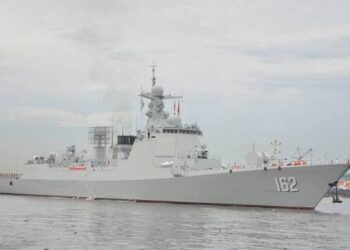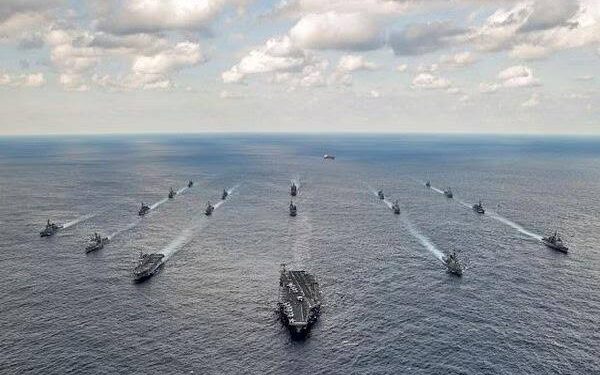The Philippine Coast Guard (PCG) reported on Saturday that China’s largest coastguard vessel has anchored within Manila’s exclusive economic zone (EEZ) in the South China Sea. The 165-meter “monster ship” entered Manila’s 200-nautical-mile EEZ on July 2, according to PCG spokesperson Jay Tarriela.
Strategic Importance of the South China Sea
The South China Sea, a marginal sea of the Western Pacific Ocean, is bordered by South China to the north, the Indochinese Peninsula to the west, Taiwan and the northwestern Philippines to the east, and the Indonesian islands to the south.
Covering an area of around 3.5 million square kilometers, it is a critical conduit for global trade, with an estimated $3.37 trillion worth of trade passing through annually. This accounts for one-third of global maritime trade, including 80 percent of China’s energy imports and 39.5 percent of its total trade.

Competing Claims and Resources
The South China Sea is rich in resources, including an estimated 11 billion barrels of untapped oil and 190 trillion cubic feet of natural gas. These resources, along with significant fishing stocks and strategic shipping lanes, have led to competing claims from Brunei, Indonesia, Malaysia, the Philippines, Taiwan, and Vietnam. China’s sweeping claims of sovereignty over the entire sea have heightened tensions with these nations.
Confrontation and Dialogue
The PCG confronted the Chinese vessel, warning it that it was in the Philippine EEZ and inquiring about its intentions. “It’s an intimidation on the part of the China Coast Guard,” Tarriela stated. “We’re not going to pull out and we’re not going to be intimidated.” The Chinese ship, which had deployed a small boat, was anchored 800 yards from the PCG vessel.
In May, the PCG deployed a ship to the Sabina Shoal to deter China’s small-scale reclamation efforts, which China denied. China has carried out extensive land reclamation in the South China Sea, building military facilities that have caused regional and international concern. Despite a 2016 ruling by The Hague-based Permanent Court of Arbitration rejecting China’s expansive maritime claims, Beijing continues to assert sovereignty over most of the sea.
Efforts to Manage Disputes
Following a high-level dialogue, the Philippines and China agreed on the need to “restore trust” and “rebuild confidence” to better manage maritime disputes. However, the Philippines has declined offers from the United States, its treaty ally, for assistance in operations in the South China Sea, even amid tensions with China over resupply missions to Filipino troops on a contested shoal.
Bottom Line
The situation in the South China Sea remains tense, with China’s assertive actions and sweeping claims continuing to provoke its smaller neighbors. The Philippines, while engaging in dialogue with China, maintains its stance against intimidation and seeks to manage disputes through diplomatic means. The strategic and resource-rich region remains a flashpoint for potential conflict, underscoring the importance of international efforts to uphold maritime law and regional stability.

















